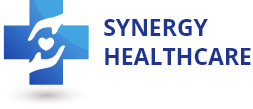Due to the various heart-related diagnostics and treatment procedures, cardiology medical billing is a complex and specialized area in medical billing. Specialist billing providers such as Synergy HCLS understands this and provides cardiology medical billing solutions that facilitate revenue management in a compliant manner. Synergy High Care Level Synthesis offers solutions ranging from cardiology billing to entire revenue cycle management thought processes and it is tailored to cardiology practices to keep these practices agile, compliant and especially prepared for what challenges lie in 2025. In this blog post, we will discuss everything related to essentials of cardiology medical billing common cardiology codes, insurance verification, and major challenges of cardiology billing today.
What is Cardiology in Medical Billing?

Cardiology medical billing deals with billing for services provided for diagnosis, treatment, and prevention of heart or cardiovascular diseases. These procedures include everything from simple diagnostic tests such as electrocardiograms (EKGs) to more invasive procedures such as stent placement, catheterization, and surgery of the heart.
Because many of these procedures come with advanced technology and unique codes, cardiology medical billing is a complex domain that requires a lot of expertise. Correct and precise cardiology medical billing is very important because even the slightest error can result in claim denial or low payments. The domain of cardiology is really complex and medical billing providers will really have to record every one of these solutions in distinct codes and billing policies by payer (i.e., insurance company) to ensure accuracy of billing.
What is the Billing Code for Cardiology?
CPT and ICD-10 Codes in Cardiology medical Billing These codes assist in categorizing the service rendered, the diagnosis of the patient, and the type of procedures performed. There are some common billing codes that are found in cardiology which will include CPT and ICD-10 codes, including the following:
CPT Codes: To designate specific procedures and services. For example:
- 93000: ECG with interpretation and report
- 92928: Percutaneous coronary intervention (PCI), with or without stent insertion.
- 93306:Transthoracic echocardiogram, complete; for evaluating structure and function of the heart
ICD-10 Codes – Indicate the diagnostic code for the condition that the procedure is intended to remedy. For example:
- I25. 10: Atherosclerotic heart disease of native coronary artery, unspecified whether with angina pectoris
- I21. I21.9 - ST elevation (STEMI) myocardial infarction of unspecified site.
- I48. Codes for atrial fibrillation: From 91 through 99
The codes must be chosen correctly during cardiology medical billing because the same insurance companies spend a lot of time in analyzing the claims and service codes for cardiology-related services as they are considered to be costly and specialized services. Code accuracy is essential, as discrepancies can result in denied claims, audits, or fines for the billing provider.
Importance of Insurance Coverage Verification in cardiology Medical Billing Services

The verification of insurance coverage is one of the major parts of cardiology medical billing. Given the expense of many cardiovascular procedures, having a patient with the right insurance that covers the needed services is vital to prevent payment complications and displeased consumers. Insurance verification is one of the most important aspects of cardiology medical billing and here is why.
1. Allows You to Qualify for Services
It is crucial to verify that a patient is currently eligible for insurance prior to rendering any services for cardiology. The nature of cardiology treatments and interventions is costly with insurance verification preventing scenarios in which patients could receive services that insurance may not cover leading to unexpected bills and financial stress.
2. Minimizes Claim Denials
When billers pre-qualify for insurance coverage, they will be able to protect claims denials arising from incorrect or expired insurance-related details when submitting claims. This helps them in ascertaining whether pre-authorization is needed and also aids them in finding any limitations in the policy for specific cardiology treatments.
3. Improves Patient Satisfaction
Better patient experience with straightforward communication surrounding insurance coverage and out-of-pocket costs. Your patients will have a better relationship with you if you tell them in advance what services are going to be covered and what they will have to pay, and so will be more satisfied patients.
4. Enables Efficient Revenue Cycle Management
Claim submissions and reimbursements must occur and be received on time to support efficient revenue cycle management. Verifying coverage before physicians see patients allows billing teams to send forth a clean claim with minimal rejection risk, which means reimbursing clinicians faster and developing a consistent cash flow.
As part of its cardiology billing solutions, Synergy HCLS offers insurance verification services. Their standardized team verifies every insurance detail of a patient before the service is rendered, ensuring claim denials are avoided and reducing the chances of losing revenue due to insurance complications.
Important Obstacles of Cardiology medical Billing Services in 2025
Statistics show that cardiology medical billing in 2025 is getting more complicated due to new regulations, changing coding patterns, and a payer policy that disrupt the accuracy and promptness of billing or reimbursement. The following are some of the top cardiology billing provider challenges and the solutions from Synergy HCLS:
1. Challenge: Adapting to Regulatory Changes and Compliance
Requirements for cardiology medical billing services change regularly by regulatory bodies, and due to changes not implemented in your service, you risk being audited, fined and at worst losing your cardiology service. Specific changes, such as recent updates in Medicare guidelines and coding policies around certain cardiology procedures, may keep some practices busy.
Response: Synergy HCLS tracks every OIG update when it comes out for every sub-specialty of cardiology billing. The members of their team are routinely trained and educated on current Medicare, Medicaid, and private payer compliance requirements. This helps avoid compliance risks and leads to correct billing practices.
2. Challenge: Managing High Volume of Documentation
The cardiology services are often high value and need a high detailed clinical note, imaging, and procedure reports and thus have a huge amount of documentation associated with them. Poor documentation can result in claim denials and you suffer a loss in revenue.
Solution: Documentation of all the details required to perform the above are captured by Synergy HCLS. They review documentation extensively to capture all details before submission. The program also partners with cardiologists to develop better documentation practices to minimize the chance of denials where documentation is incomplete.
3. Challenge: Accurate Coding for Complex Cardiology medical billing Procedures
Complex procedures are prevalent in cardiology and are thus subject to highly specific coding. Coding errors will result in denials, but they could also under- or over-code which definitely compromises the financial health of the practice.
Answer: The certified coders at Synergy HCLS, who specialize in cardiology, have vast knowledge of the cardiovascular care-related CPT and ICD-10 codes. Their advanced billing software validates coding and prevents work stoppage errors as a result of cash flow disruption. This proficiency in complex coding ensures that practices are reimbursed to the fullest extent possible.
4. Challenge: Prior Authorization Requirements for Cardiology Procedures
Prior authorization is needed for many cardiology procedures but especially for costly services such as cardiac catheterization, stent placements and advanced imaging tests. Without prior authorization, claims can be denied or reimbursement reduced.
Solution: Synergy HCLS streamlines the prior authorization process by identifying specific requirements for each procedure and communicating with insurance companies to obtain approvals when necessary. They help practices lower denials and enhance their revenue cycle by ensuring prior authorizations are in place before patients walk through the door.
5. Challenge: Addressing Technological Advancements in Cardiology Medical Billing
As telemedicine and remote monitoring become increasingly prevalent, cardiology practices are adopting more digital and remote-based modalities, necessitating new billing codes and documentation standards. But staying on top of these developments is critical to proper telehealth and remote patient monitoring billing.
Synergy HCLS stays on top of the latest technological developments by implementing new billing codes and telehealth procedures into their billing processes. They train foster staff to manage the subtleties of charging telemedicine and digital cardiology administrations so practices can be compensated for these advanced treatment strategies.
Conclusion
Cardiology billing has always been a specialized area, but new challenges are arising all the time that require specialized knowledge and proactive measures in order to maximize revenue and minimize compliance issues. Synergy HCLS provides cardiology medical billing solutions tailored to speciality-specific requirements ranging from regulatory compliance and documentation assistance to high-volume coding and prior authorizations.
With an interface by Synergy HCLS cardiology practices can simplify billing processes, enhance revenue cycle management and devote time toward quality patient care. Cardiology billing in 2025 is a complicated puzzle, one that demands expertise, precision, and adaptability—and with Synergy HCLS as a partner, we are dedicated to ensuring that your cardiology practice continues to thrive in an ever-complex healthcare environment.


